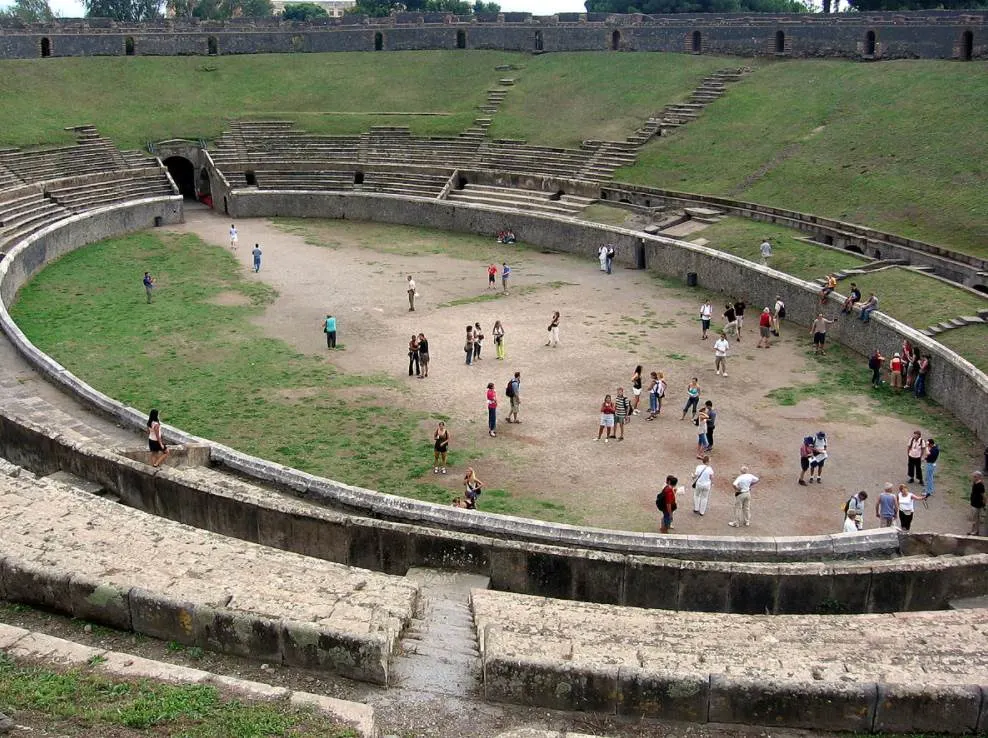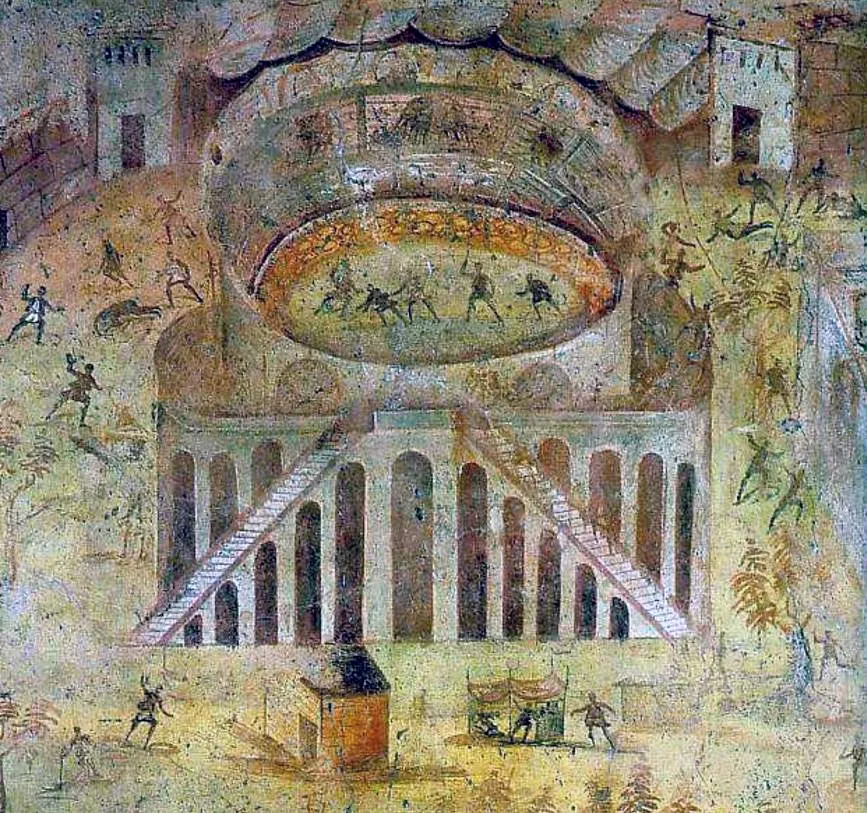One of the marvels of ancient Roman architecture remains pretty much intact because of a devastating event that took place in the year 79 A.D.
In this article, we’ll take a closer look at some of the most interesting facts about the Amphitheater of Pompeii, a fascinating ancient Roman amphitheater structure that has some remarkable stories to tell.
1. It’s located in an ancient city near Naples in southern Italy
As the name of the Amphitheatre of Pompeii suggests, it’s located in the ancient city of Pompeii. This city is now a commune within the large metropolitan area of Naples, the third-most populous metropolitan area in Italy.
This ancient city has an extended history as was founded somewhere in the 7th or 6th centuries B.C. The initial settlement already expanded into a thriving city around 450 B.C. with numerous large structures being built here.
An immense theatre, multiple temples, and countless villas made up the city of Pompeii. The centerpiece of the city was the amphitheater of Pompeii, a place where residents could watch games including gladiatorial fights and beast hunts.

2. It was built before the word “amphitheater” was even used
The popular entertainment venue was built around 70 B.C. which was the final phase before the Roman Republic was turned into a dictatorship by Emperor Augustus.
Yes, 70 B.C. is over a century before the construction of the Colosseum in Rome, the biggest and most famous Roman amphitheater ever built, was even started.
This was also a time in which the word “Amphitheater” wasn’t even used yet. Upon completion, these types of structures weren’t referred to as “Amphitheatrum” but as “Spectacula,” a reference to the events that took place there.

3. The huge structure was the first of its kind to be built in ancient Rome
Before this immense structure was built, all large ancient Roman entertainment venues were constructed of wood as opposed to stone. This means that the Amphitheater of Pompeii is considered to be the first stone structure of its kind ever built.

The building was constructed on a massive scale as well as it has a length of 135 meters (442 feet) and a width of 104 meters (341 feet). This is pretty much the space occupied by the average football stadium today.

4. Hooligans of a nearby city once caused a deadly riot in 59 A.D.
Although public executions and beast hunts were also on the menu during games at the amphitheater, the most popular form of entertainment in ancient Rome was most definitely gladiatorial fights.
This is emphasized by the fact that there was an extensive gladiatorial school located in the vicinity of the building. The men here were not only trained to kill, but also to ensure the public was entertained.
One of the frescoes found at a Roman villa in the area depicts one of the most remarkable events that took place in Pompeii, and it wasn’t one of the greatest fights by gladiators.
Just like modern-day hooligans, games were visited by away fans to support whoever they were following. This often ended in riots and around 59 A.D., a full-blown battle broke out during one of the games between Nucerians fans, a city nearby, and the Pompeians.
The scene captured on the wall of the “Casa della Rissa nell’Anfiteatro” not only depicts the amphitheater as it looked like in those days but also the riot that seemingly spread all across town. The result was a lot of casualties and a 10-year ban on games.
Yes, these were die-hard fans back then.

5. The building has been well-preserved because of a calamity in 79 A.D.
Many of the buildings in and around Pompeii and the nearby ancient city of Herculaneum have been well-preserved. That’s because they were buried under a thick layer of volcanic ash following the eruption of Mount Vesuvius in the year 79 A.D.
The layer of ash had an estimated thickness of between 4 and 6 meters (13 and 20 feet) which protected it from the elements and human destruction the following centuries.
Today, the city of Pompeii and its buildings give us a unique insight into life in ancient Rome, as well as the gladiatorial culture of its time. Many of these elements have been lost the following two millennia in other places of the ancient Roman world.

More interesting facts about the Amphitheatre of Pompeii
6. The building has a relatively simple design, at least a lot simpler compared to the Colosseum, its bigger brother in Rome. There is only one interior space which is the corridor to access the arena that runs all around the amphitheater.
7. The simple design of the building doesn’t mean that it cant be considered as an architectural marvel of the ancient world. Modern crowd control experts have tested the venue and concluded that it was just about as optimal as it could be.
8. It’s assumed that about 20,000 spectators could watch the games in this arena. This is less than half the size of the Colosseum’s capacity which is estimated to have been 50,000.

9. Many of the immense buildings in ancient Rome were built as propaganda tools. The Colosseum was built by Emperor Vespasian shortly after he seized power in an attempt to appease the people of Rome.
This worked very well and was exactly what happened during the construction of the arena in Pompeii as well. “Panem et Circenses” or “Bread and Circuses” or “Bread and Games” were used by Gaius Quinctius Valgus and Marcus Porcius, local politicians who built the arena to gain power.

10. Because the Amphitheater of Pompeii is one of the best-preserved ancient Roman amphitheaters in the world, it has been used for a wide variety of modern-day events as well.
Some of the most notable events at the arena were a concert film recorded by English rock band Pink Floyd in 1972 called “Pink Floyd: Live at Pompeii.” Back in September 1991, Frank Sinatra performed at the amphitheater as well.
Although these events in a 2,000-year-old building are amazing, the main purpose of this archaeological site is to learn about ancient Roman culture and to stand in awe of the Roman engineers and architects who built this incredible structure without the use of modern tools.

